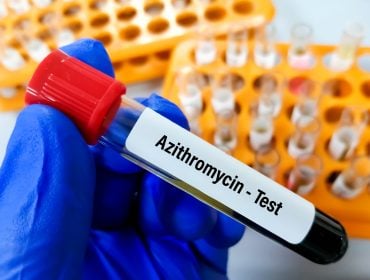Combatting Gonococcal Conjunctivitis: Best Practices
Facing gonococcal conjunctivitis, a troubling eye infection linked to genital bacteria, demands prompt action. This condition often signals by redness, swelling around the eyes, and unusual discharge. While babies can get it at birth through maternal transfer, adults face risks too due to sexual contact or even without noticeable genital issues.
Successful care hinges on correct identification using specialized culture methods plus effective antibiotic regimens, actions that rely heavily on skilled teamwork among health professionals to secure the best outcomes for those affected by this challenging health concern.
Understanding Gonococcal Conjunctivitis
You’re facing a tough fight if you’ve got gonococcal conjunctivitis (GC). It comes from Neisseria gonorrhoeae, that nasty bug causing troubles down there for some. In babies, we call it ophthalmia neonatorum.
They catch it during birth through infected secretions. Even with eye protection at birth, about one in ten could still get GC. For adults and older kids getting GC?
Think sex or touching the eyes after contact with contaminated stuff, though this germ doesn’t last long on surfaces outside our warm bodies. If your eye starts to look red, swollen like a balloon (that’s chemosis), lids puff up or tender spots show around your peepers, you might have caught it too; especially likely in young fellas these days. Remember: without quick treatment from pros who know what they’re doing, with antibiotics right away, it can turn bad fast leading to sight loss or worse infections spread all over.
Identifying Common Symptoms
As soon as you feel eye pain or see unusual discharge, think gonococcal conjunctivitis (GC). Infants often get it during birth; adults may catch it through direct contact with infected fluids. Babies need immediate care to stop serious harm like blindness.
Adults should also seek quick treatment if eyes become red and swollen or start oozing a thick fluid — signs of GC that could lead to worse issues without medical help. If your lids hurt when touched, turn watery, or puff up suddenly, don’t wait around: these are typical GC signals telling you to see a doctor pronto for tests and drugs that can fix this fast.
Diagnosis and Testing Methods
To beat gonococcal conjunctivitis, start with the best test. Use nucleic acid amplification testing (NAAT). It’s top-notch for finding infection in pee or swabs from down there, front and back, or even your throat.
No need to prep before peeing for a sample! You can grab it yourself too! If you’re over 150 kg, take one gram of ceftriaxone shot; if less, half that will do. Take doxycycline twice daily for seven days. Get checked again around three months later to make sure all is well.
Antibiotic Treatment Strategies
For your eye infection from gonorrhea, doctors often use ceftriaxone. It’s a strong drug given by shot. Sometimes you’ll get azithromycin too; it’s another antibiotic but in pill form.
You take these medicines just once most of the time to kill all germs quickly and keep them away. Make sure not to skip on this treatment because it can stop worse problems with your eyes or health later on. Always remember, even if signs go away fast after meds start, finish every dose they gave you! our doctor knows best which antibiotics will work for this tough bug since some don’t help anymore due to resistance.
Preventing Transmission and Infection
To prevent gonococcal conjunctivitis transmission and infection, it’s key to stop bacteria spread. Start with hand washing; don’t touch your eyes with unwashed hands. If you have symptoms like redness or itchiness in the eye area, see a doctor right away.
Keep personal items like towels separate from others’. Avoid sharing makeup or face lotions that could carry germs near the eyes. Doctors may suggest treatments including pulse dosing of topical steroids for controlling inflammation but limit their use due to risks such as increased pressure inside the eye.
Addressing Complications Early
You need to act fast when you have red, sore eyes. It could be gonococcal conjunctivitis. This infection grows strong quickly and can hurt your vision if not treated early with the right drugs.
Doctors often give a shot of ceftriaxone and an azithromycin pill for it. But now they think twice about this mix due to fears over drug resistance, hurting good germs in our bodies or making other bugs stronger. The key is smart use of these medicines – enough to fight off the infection but not so much that we help create superbugs resistant to treatment.
Follow-Up Care Essentials
After your treatment, good follow-up care is key to keep your eyes healthy. You’ll need check-ups with an eye expert who knows about gonococcal conjunctivitis. Their job is to make sure everything’s healing right and there are no hidden problems.
Your first visit should be a few days after starting meds. If you have severe eye pain or changes in how well you see before then, don’t wait – call the doctor right away. Remember that some types of this illness can come back or lead to other issues if not watched closely by professionals part of your healthcare team.
Gonococcal conjunctivitis demands prompt attention. If you notice eye discomfort, unusual discharge, or redness, seek medical help fast. Doctors typically suggest antibiotic therapy to halt infection spread—vital for safeguarding vision and overall health.
Always follow your treatment plan closely; this helps prevent complications and stops the bacteria from affecting others around you. For safety measures beyond personal care, STDCheck offers discreet testing services to manage sexual health proactively, preventing such infections from turning into larger issues that affect not just eyes but one’s entire well-being.
Medically Reviewed by William Terranova, MD on May 15, 2024
Secure and Confidential
STD testing services
The fastest results possbile - available in 1 to 2 days

Tagged
Categorized As
Author: STD Check Editorial Team
At STDCheck.com, we go to great lengths to ensure quality content. We’re using our own collection of data. It is not bought or made up for “click-bait” purposes. We don’t entice traffic with cheesy graphics or raunchy headlines. Our information is to promote STD testing, educate people, let go of social stigmas, and bring awareness. We also provide a completely confidential atmosphere through private testing. When we produce an article, it is fact-based. We check it with medical advisors that approve it. Our staff consists of doctors and other medical professionals who peer review the content we make available on STDCheck.com. From all over the world, we have sourced the best and the brightest content developers, including medical professionals, marketing engineers, data scientists, content specialists, and media relations.




